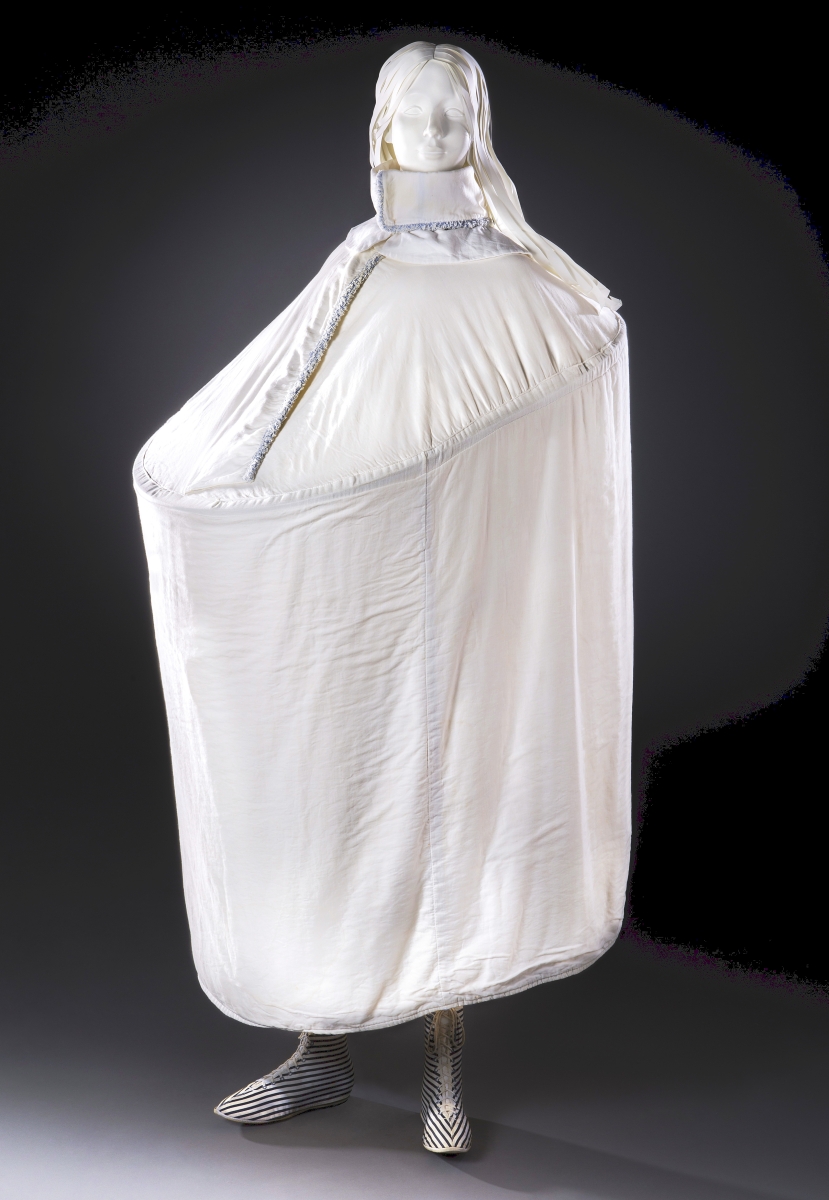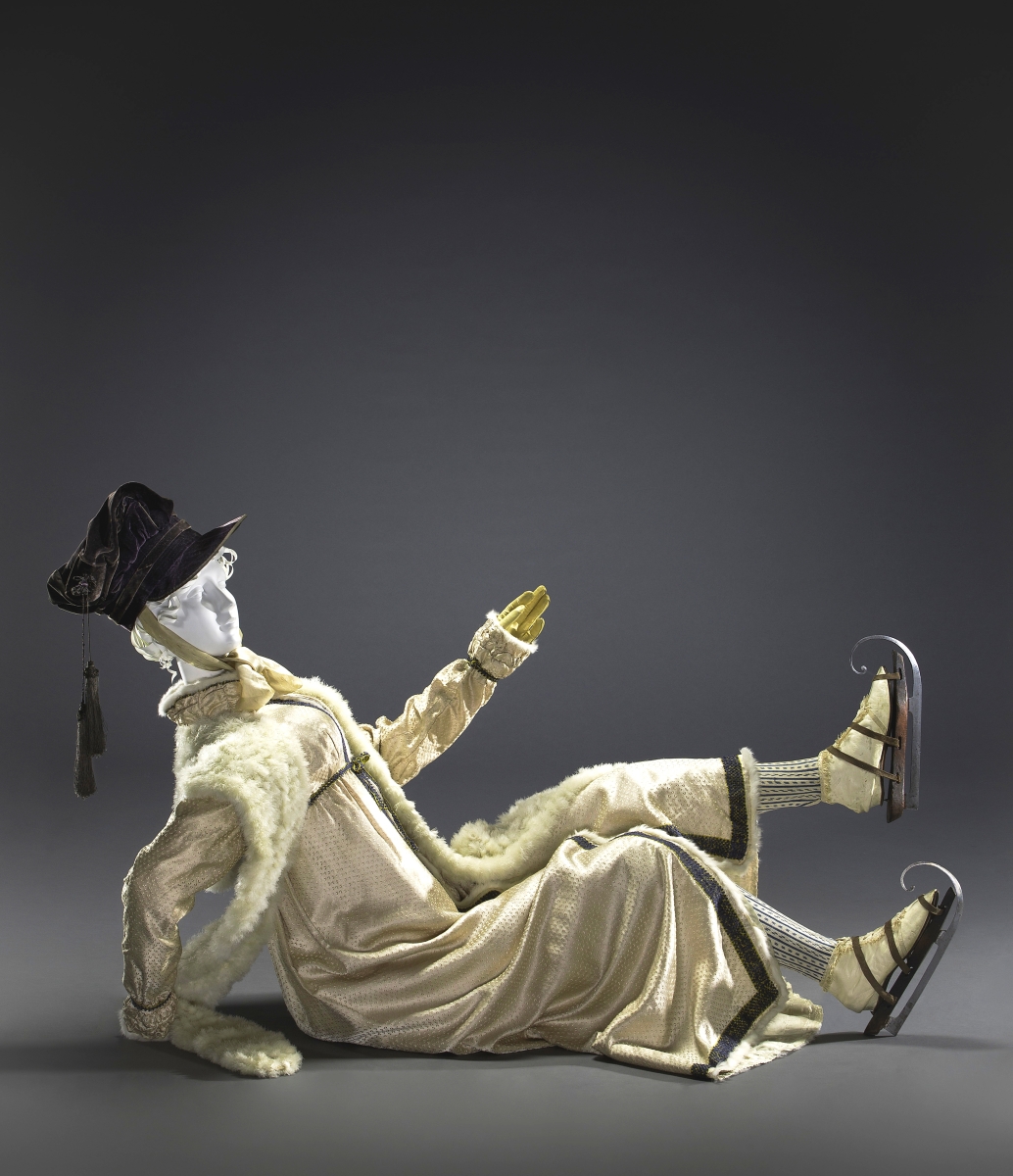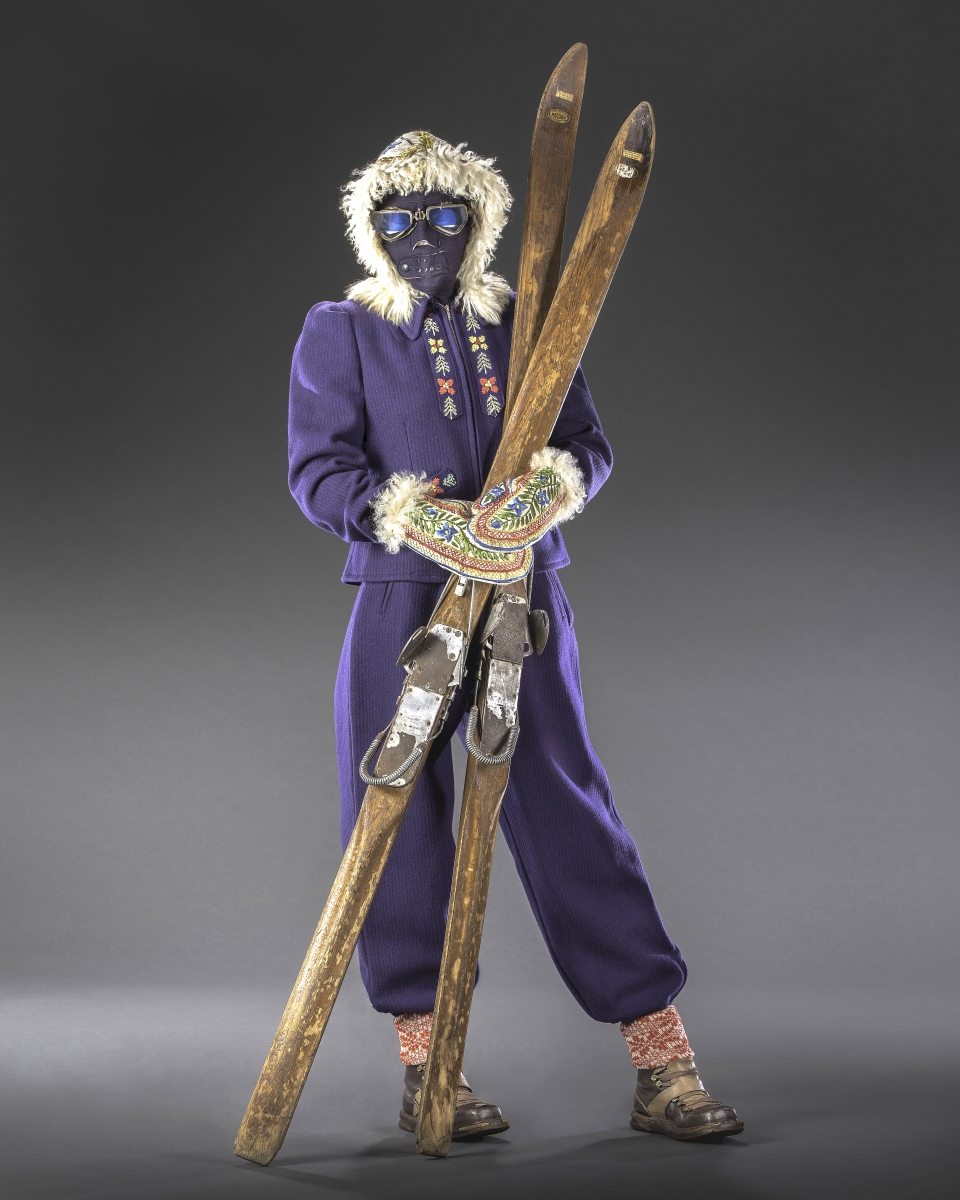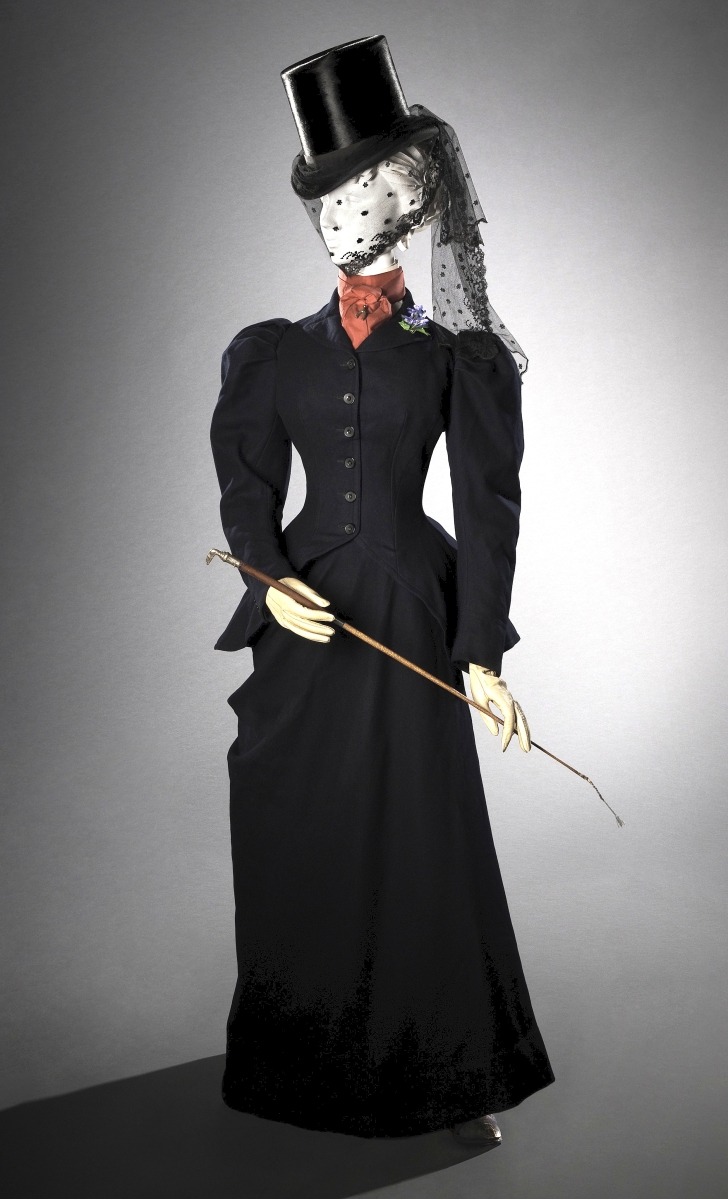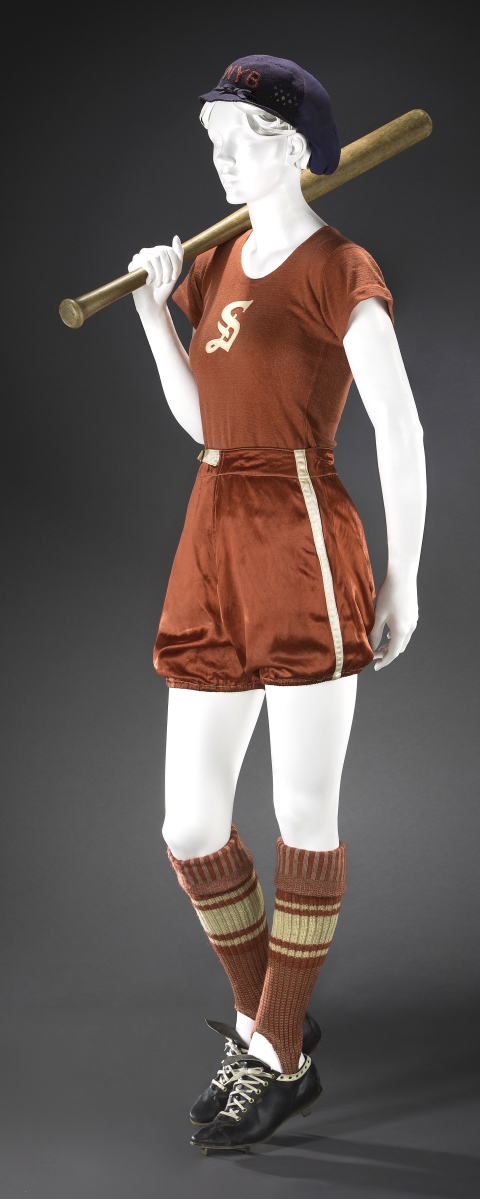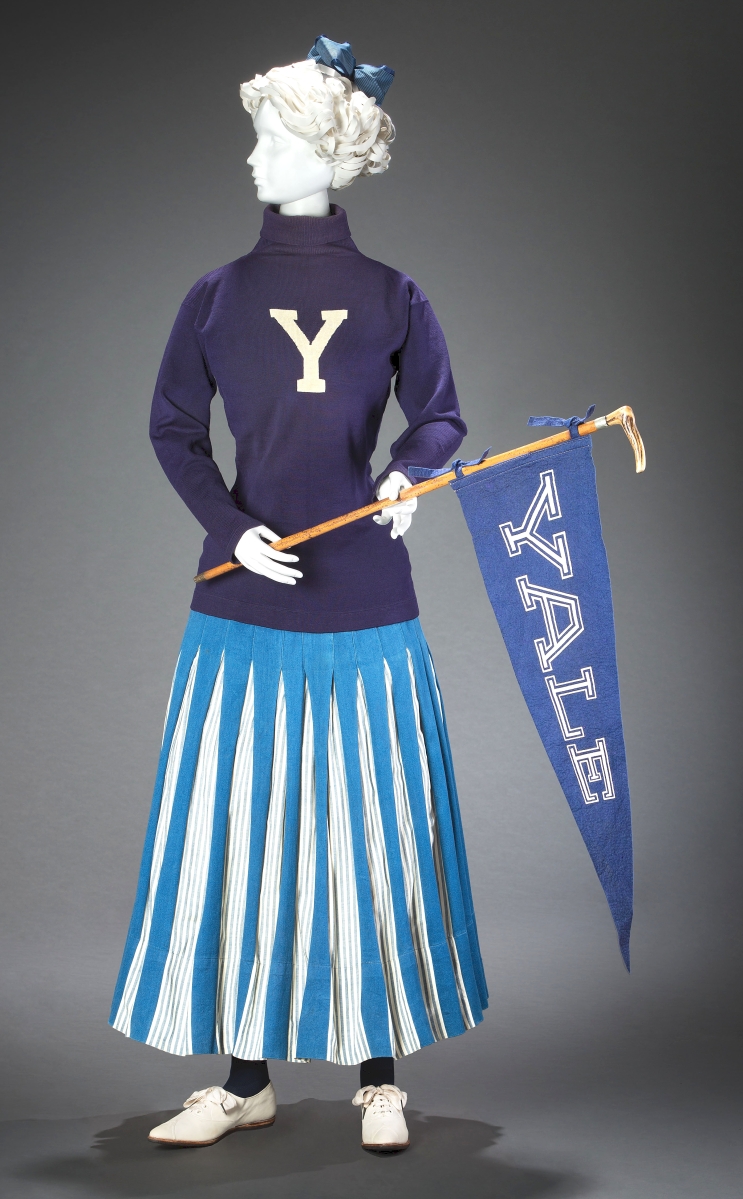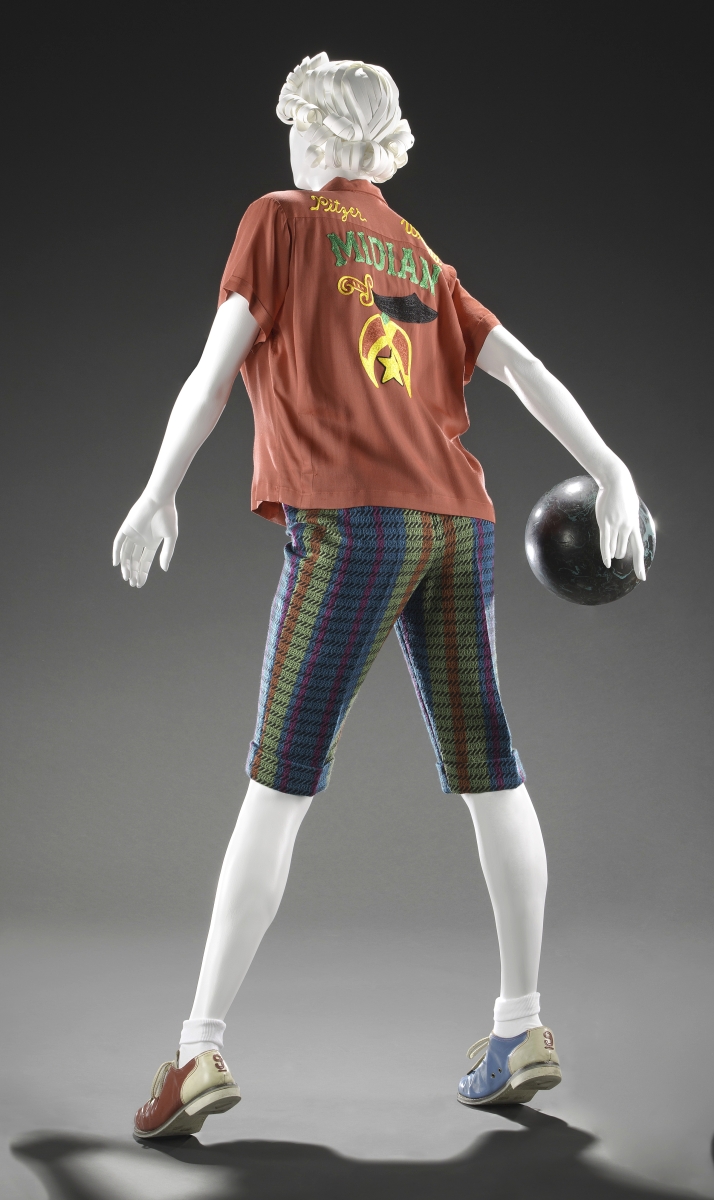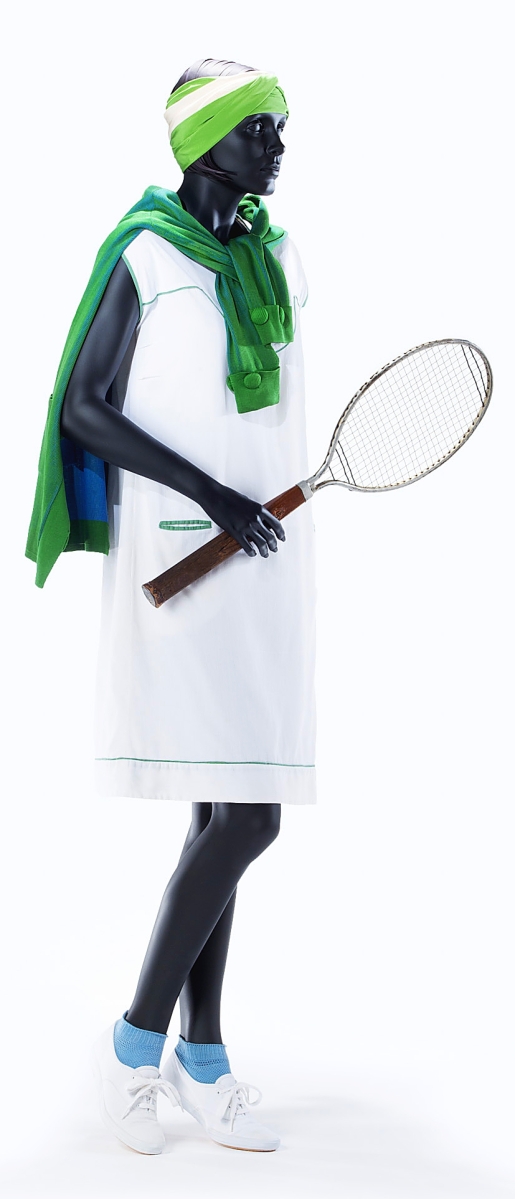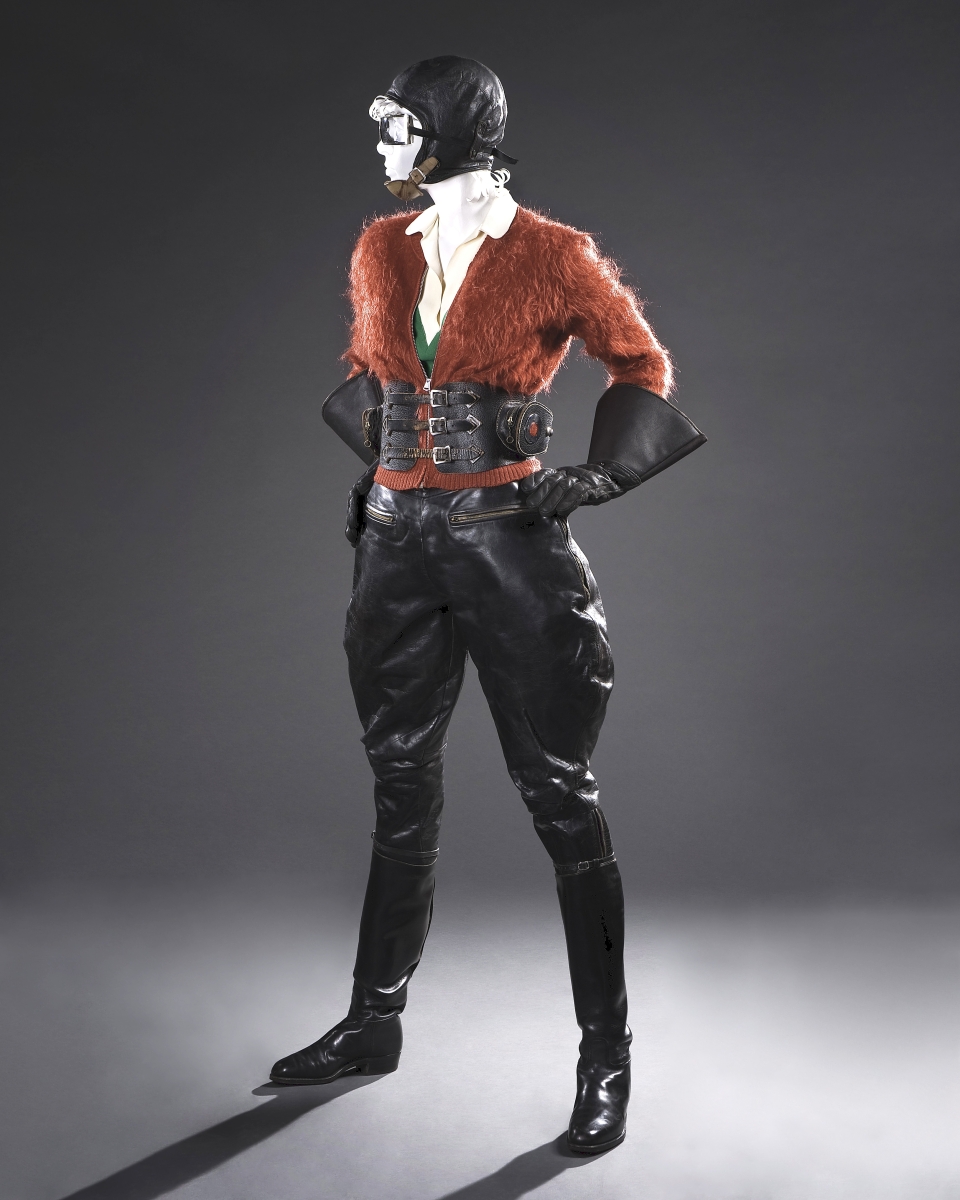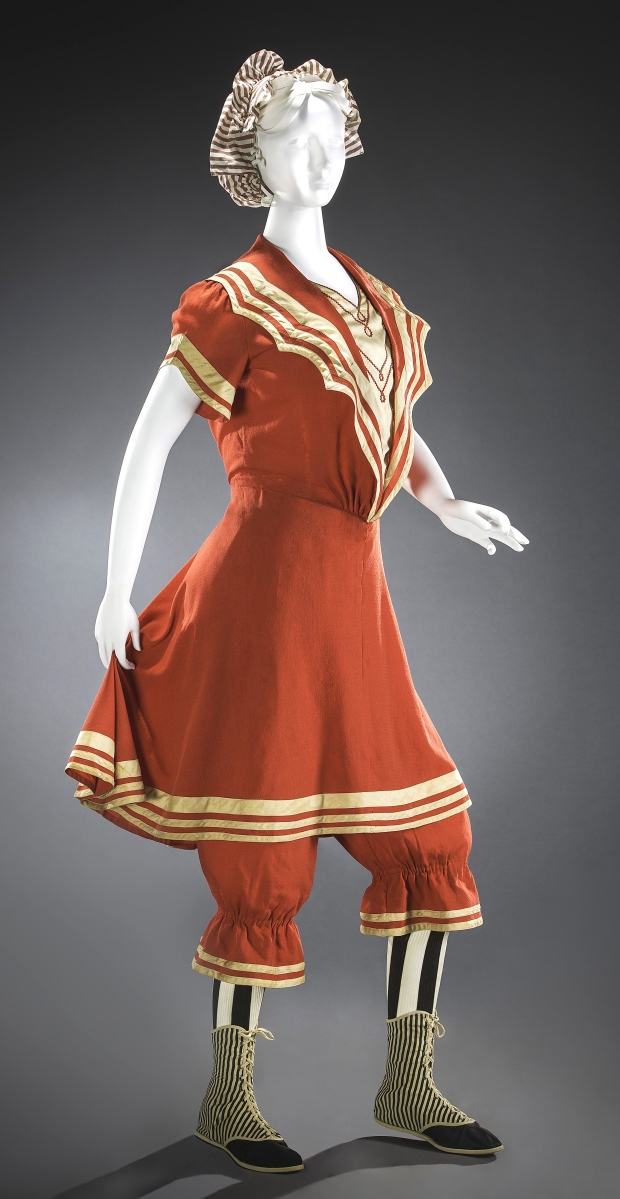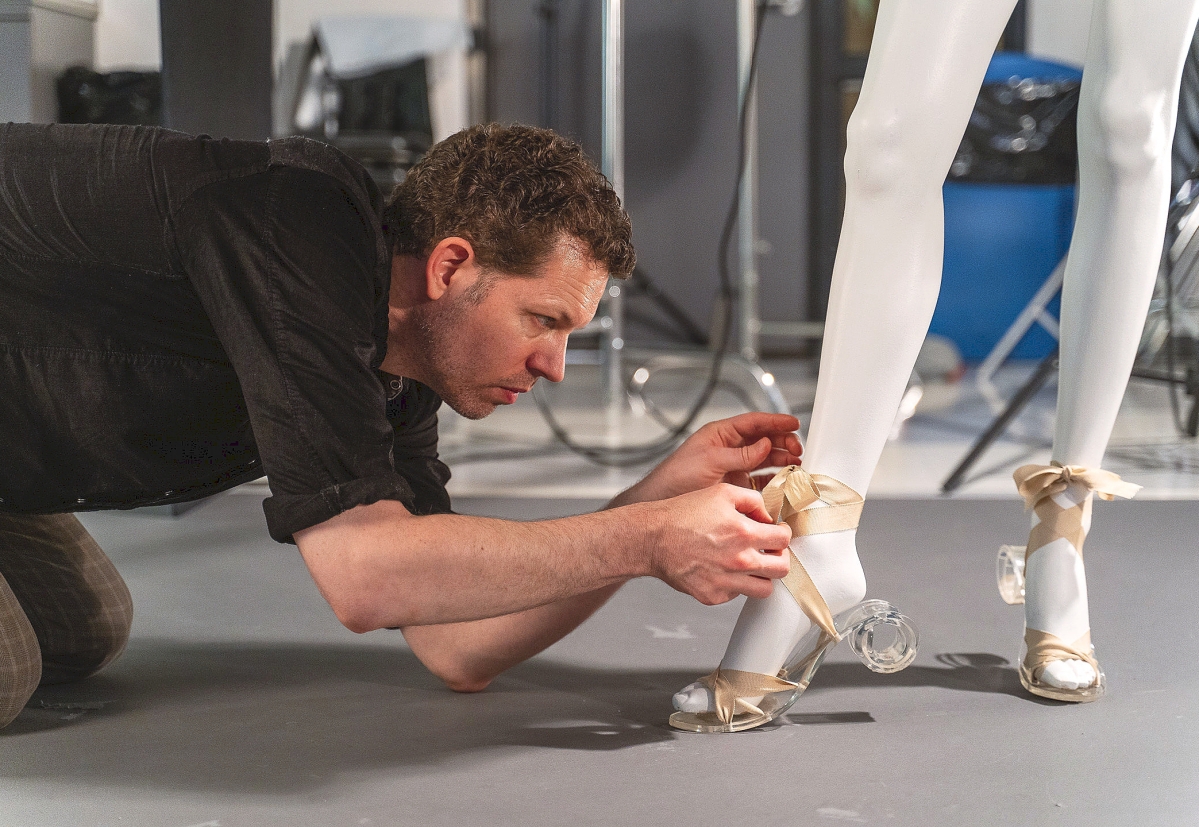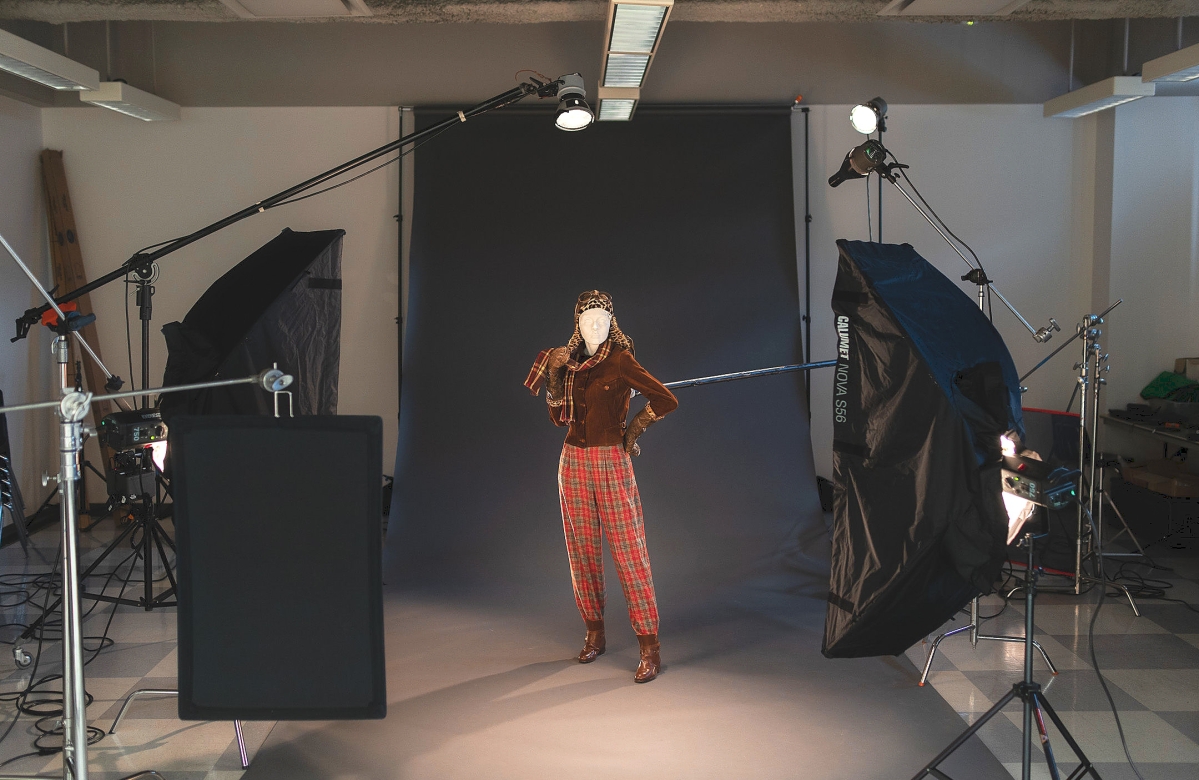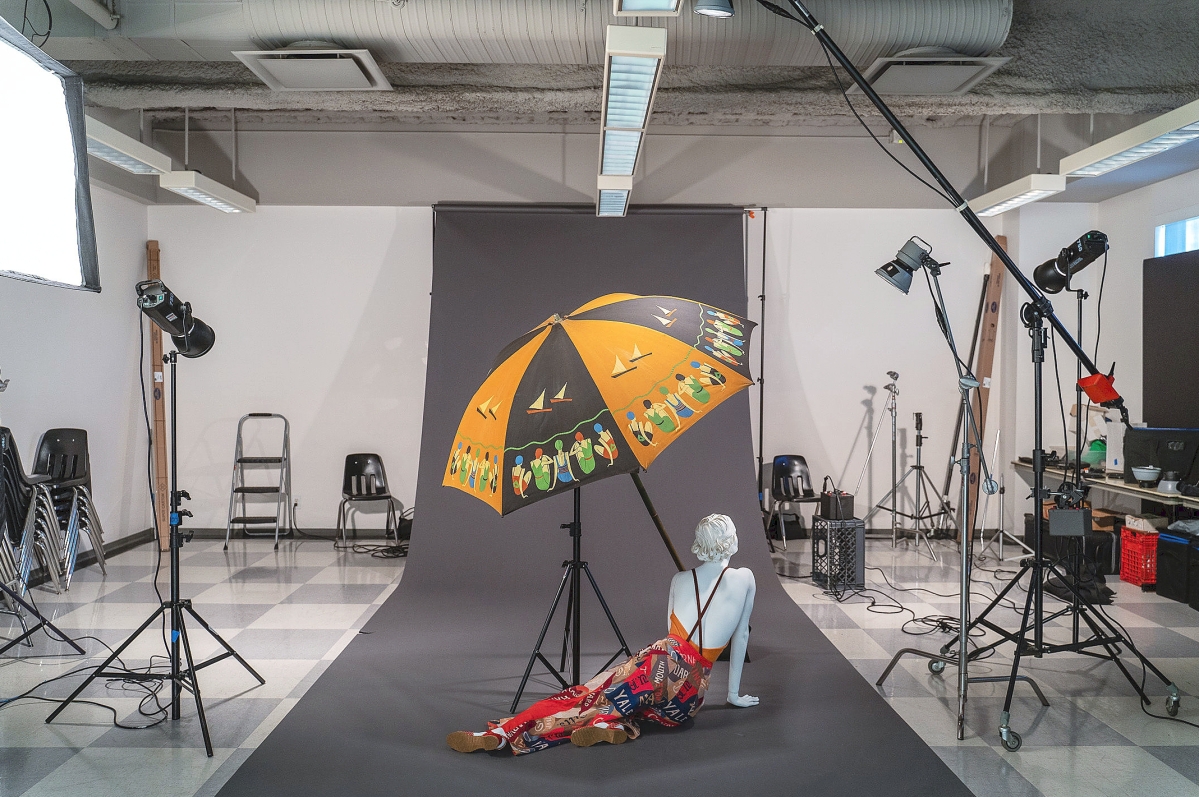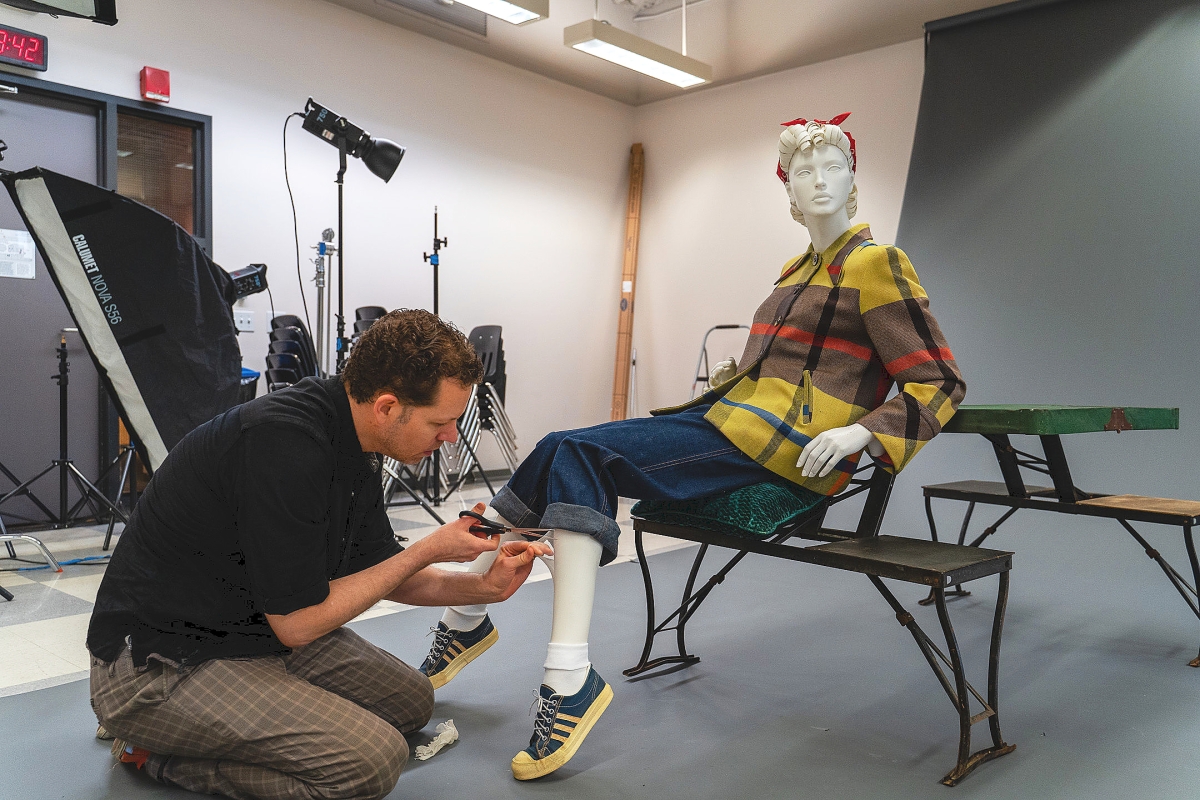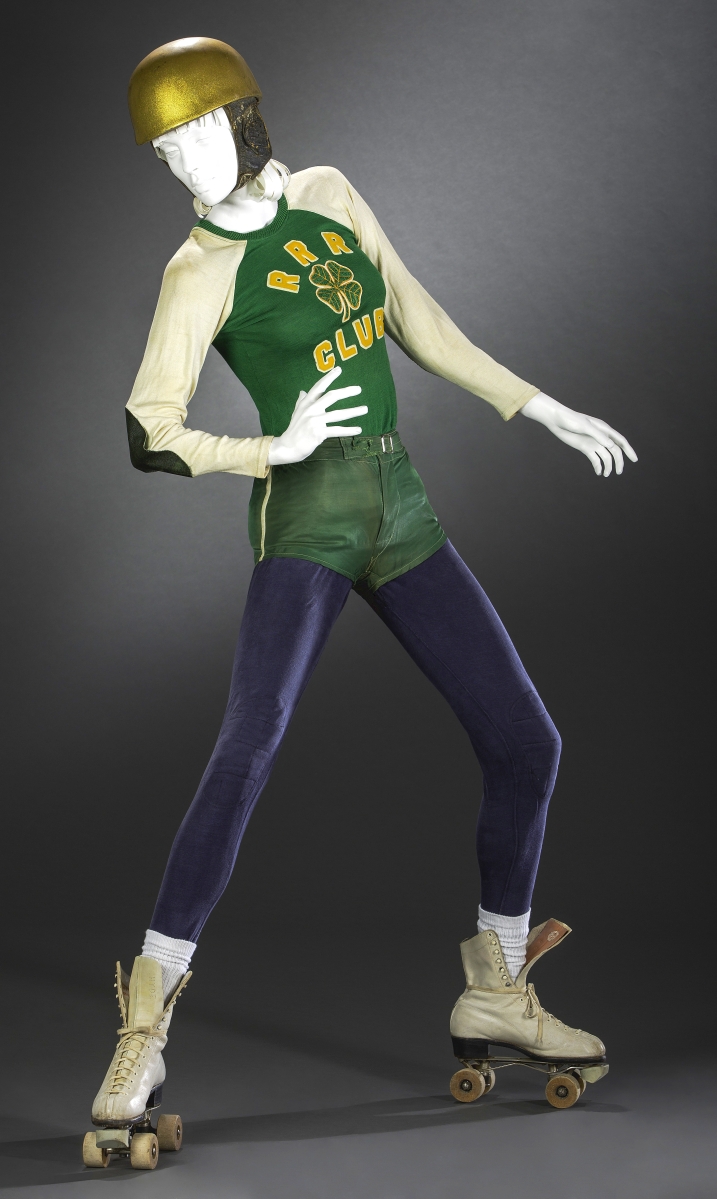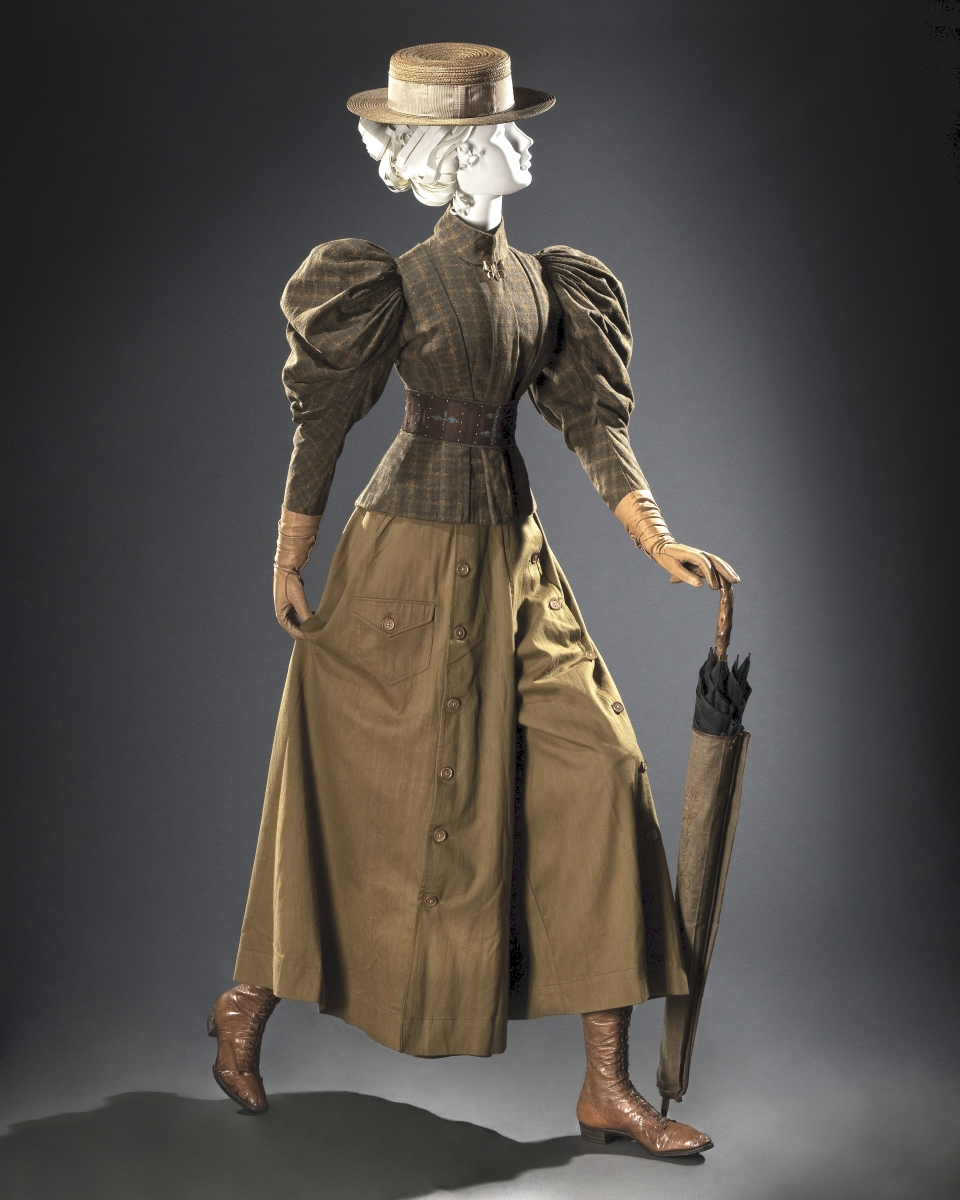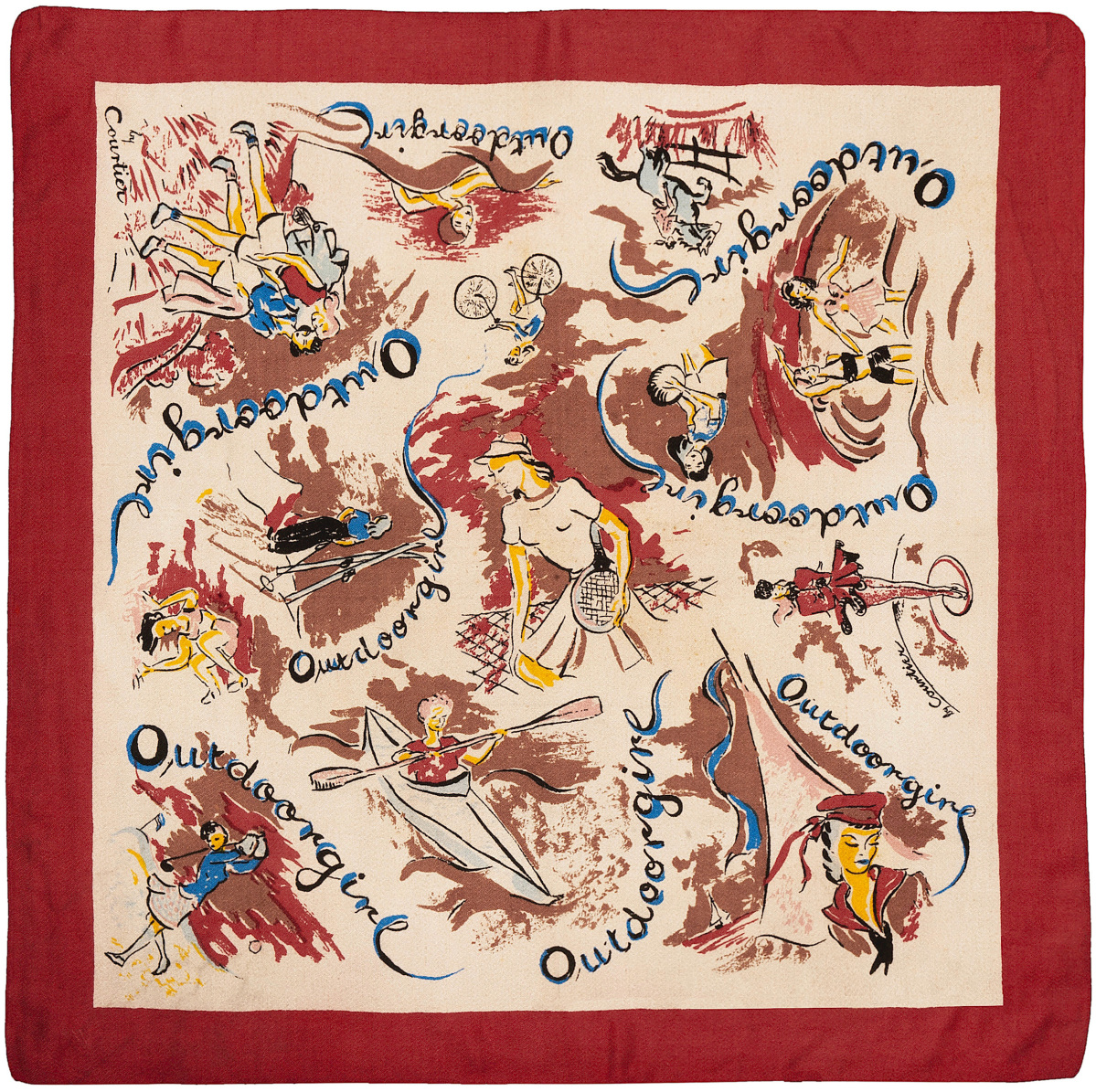
Outdoorgirl scarf, 1946. ©FIDM Museum, courtesy American Federation of Arts, Brian Davis photo.
By Karla Klein Albertson
MEMPHIS, TENN. – When you analyze it, everyone knows more about the history of female sporting gear than they think – information gathered from watching movies and newsreels on television. History of bathing costumes? Subliminally gathered from watching Esther Williams dive into a pool in Million Dollar Mermaid, 1952, or Annette Funicello dance at the Beach Party, 1963.
Live broadcasts of international Olympics and tennis tournaments as well as documentaries about past events all feature evolving fashions for an ever-increasing variety of sports in which women now compete. Even Regency period dramas regularly include a romantic equestrian scene with a demonstration of how to mount a horse in a long skirt.
Happily, the subject has now been addressed in a scholarly and engaging fashion by the touring exhibition, “Sporting Fashion: Outdoor Girls 1800 to 1960,” organized by the American Federation of Arts (AFA). Around 65 complete ensembles along with accessories and ephemera are on display – all drawn from the FIDM Museum at the Fashion Institute of Design and Merchandising in Los Angeles.
Curator Michèle Wije at the American Federation of Arts wrote to Antiques and The Arts Weekly: “The AFA has been delighted to work with FIDM Museum to bring ‘Sporting Fashion’ to diverse audiences across the country. This exhibition is a unique and exciting look at how the evolution of women’s sporting attire over the last 160 years has occurred in parallel with increased social independence and self-determination. The show’s varied outfits reflect women’s verve, determination, and joy in physical pursuits.”
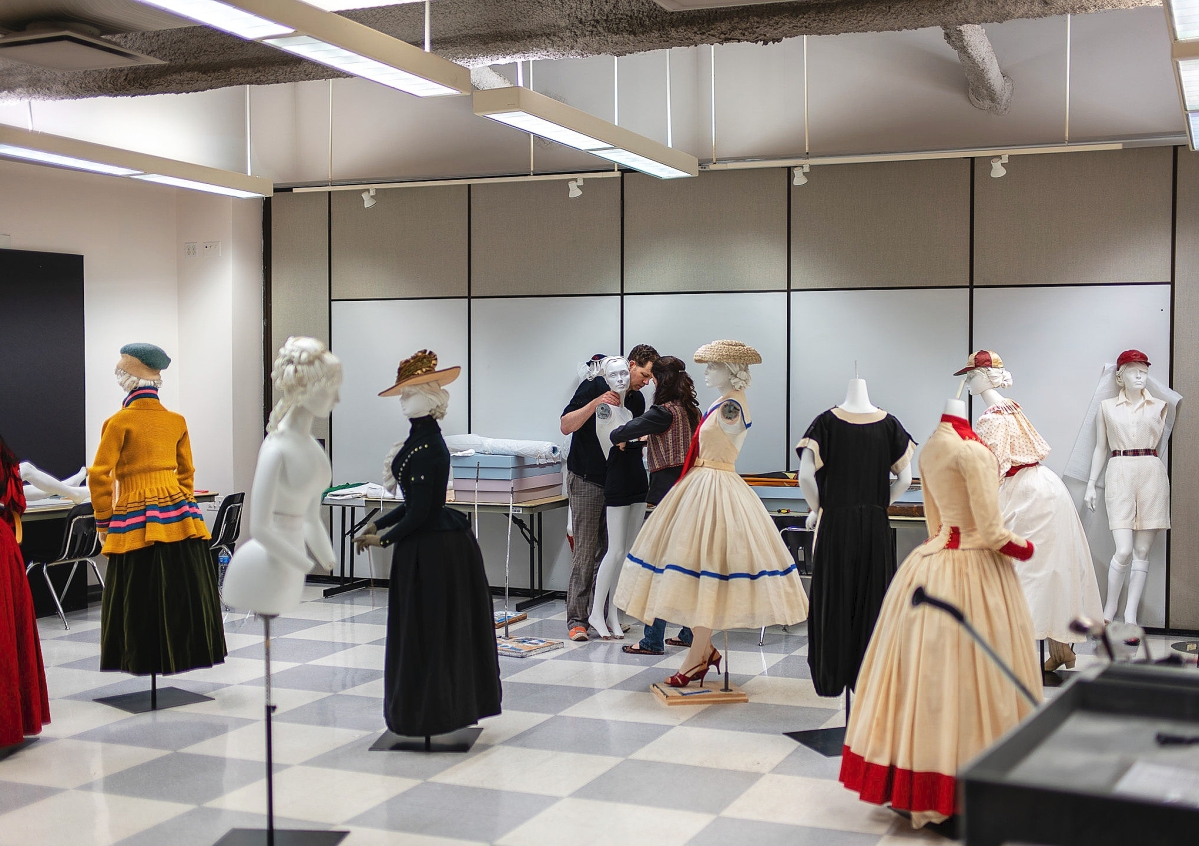
Behind the scenes of “Sporting Fashion.” ©FIDM Museum, courtesy American Federation of Arts, Brian Davis photo.
Fortunately, while waiting for a chance to see the outfitted mannequins face to face, interested collectors can order one of the most captivating catalogs to emerge for a long time. The authors are FIDM Museum curator Kevin Jones and associate curator Christina Johnson with a foreword by – wait for it – Serena Williams.
The tennis legend writes: “When I walked through the collections at the FIDM Museum, I found myself thinking, ‘I can’t believe women wore this.’ But in other cases, I laughed, thinking, ‘I would still wear this today.’ While clothing could once be something that restricted us in our athletic pursuits, today it is something that enables us to compete at our most confident and most capable. We can’t forget that fashion is also really fun. It can be an important tool to empower female athletes, to give them a form of self-expression and individuality in a world that historically belonged to men.”
Two photos of tennis costumes accompany her foreword. One shows the magnificent Althea Gibson as she wins the Wimbledon women’s singles championship in 1958; she wears a traditional skirted white outfit with belt. The other is Williams herself on Day Three of the French Open in 2018, sporting a black Nike stretch bodysuit.
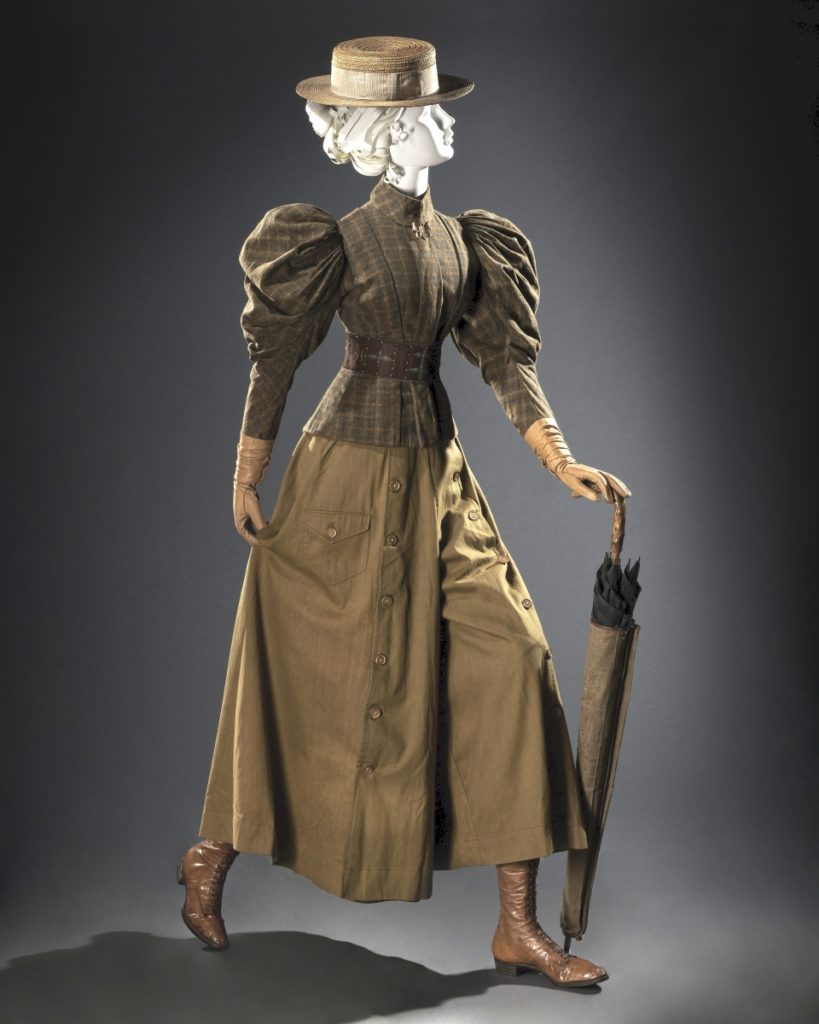
Mountaineering ensemble, 1890s. ©FIDM Museum, courtesy American Federation of Arts, Brian Davis photo.
The exhibition and catalog are divided into broad sections – “Making Waves” features the evolution of swim attire. Tennis – and golf – are gathered into “Having a Ball.” The opening chapter, “Stepping Outdoors,” refers to the expectation that you would wear a certain sort of ensemble just to promenade in the park.
In most cases, these fashions are the haute couture of sport, created for a certain class of women with money for a varied wardrobe. The pioneer mother who wore the same thing for plowing, cooking and that popular sport of slapping laundry in the stream could not play by the same rules.
In addition to full-page illustrations of the show’s ensembles, the catalog is rounded out with dynamic period photographs, sporting views in painting and prints, and short biographies of interesting but lesser known women athletes. One is devoted to Santa Monica, Calif., weightlifter Abbye “Pudgy” Stockton (née Eville, 1917-2006), who became a personal trainer with her own women’s gym. As she correctly stated, how can you get anything done, if you don’t have strength?
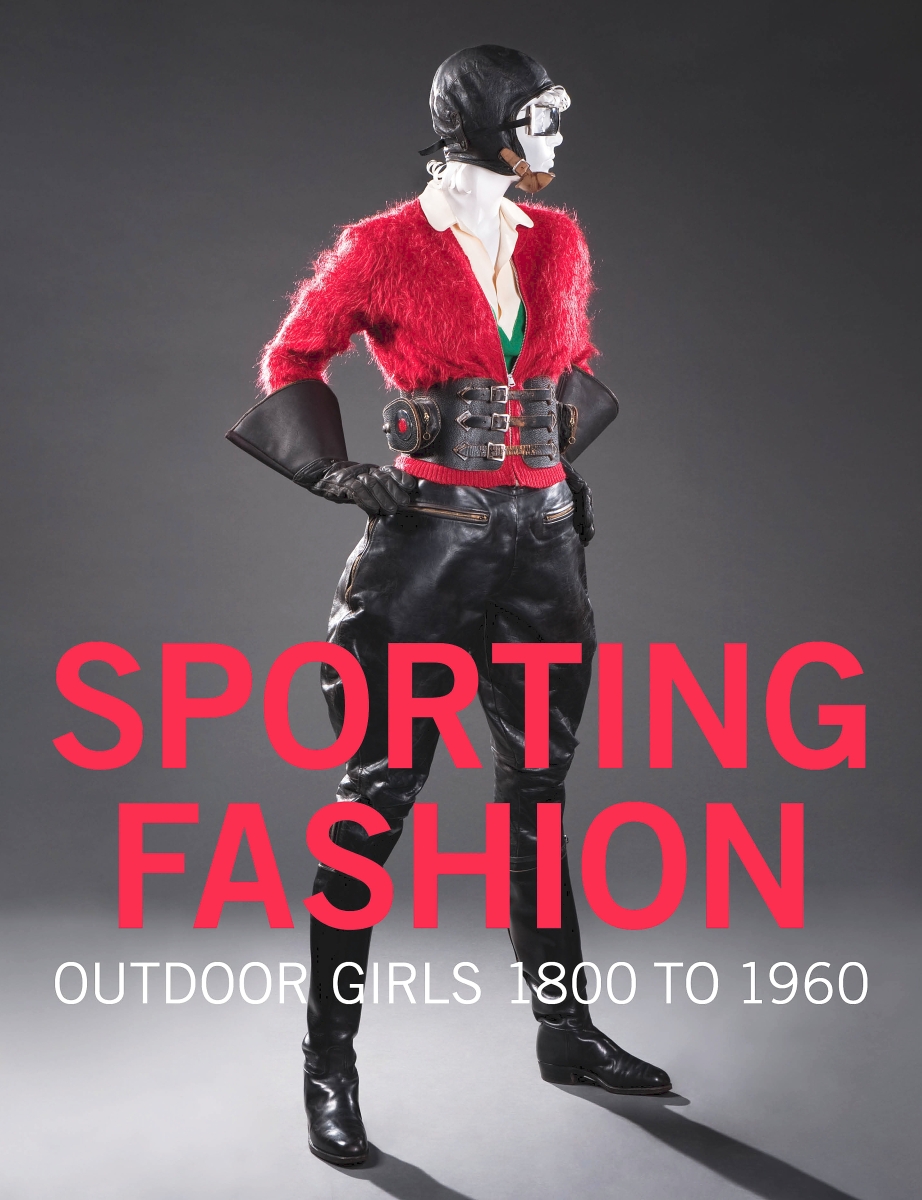
Sporting Fashion: Outdoor Girls 1800 to 1960 by Kevin L. Jones and Christina M. Johnson with Kirstin Purtich; foreword by Serena Williams. American Federation of Arts & Prestel, New York City, 2020. Photo courtesy American Federation of Arts.
Another biography on prize-winning Australian equestrian Esther Stace (née Mumford, 1871-1918) captures her in action as she clears a high jump riding sidesaddle in a long skirt. Men in the background look amazed. The lesson is clear: women who wanted to engage in sports would find a way to excel in spite of the handicap of restricting costumes.
Free climbing – feet on a ledge, fingernails in the crevice – is among the most challenging of mountain sports. One of the most striking of the vintage photos is the two-page spread of a 1908 photo of Lucy Smith and Pauline Ranken of the Ladies’ Scottish Climbing Club scaling a sheer face of the Salisbury Crags, Edinburgh. They appear to be wearing ankle-length skirts and slippery-looking leather boots. The “Mountaineering” section explains that practicality eventually led to the adoption of divided skirts and knickerbockers such as men wore.
As the authors of the catalog put it: “Throughout the centuries, sportswomen dressed in keeping with the requirements of their games, stations in life and the cultural mores of their times. Sporting fashions developed out of necessity and morphed from one era to the next: older, restrictive styles adjusted to fit increasingly active bodies, and innovative modes were designed for emerging games that captures the popular imagination. Some sports remained prominent over time because they were transformative both physically and through clothing options, such as equestrianism with its adaptable dress and swimming in streamlined attire. Eventually, dexterous female athletes required uniforms, while their ardent spectators championed them clad in the latest sportswear. By the mid-Twentieth Century, these categories of dress standardized into specified team gear and mix-and-match separates that filled women’s closets. Moving forward, textile technology transformed established styles into contemporary active and casual wear.”
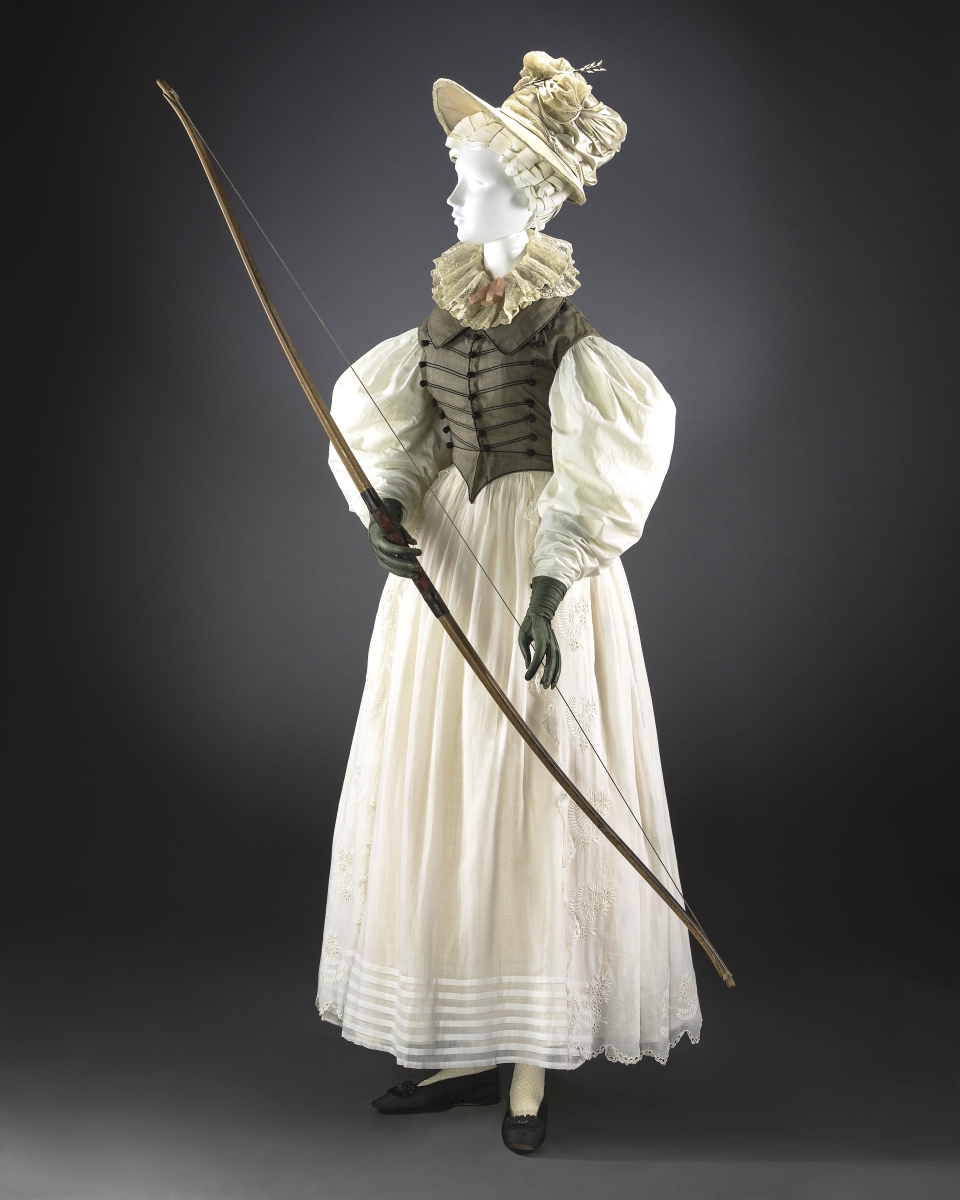
Archery ensemble, 1820s. ©FIDM Museum, courtesy American Federation of Arts, Brian Davis photo.
Of the exhibits, a personal favorite is on the catalog cover – a fully-kitted out 1930s motorcycle rider in black leather jodhpurs with gauntlets and a wide belt sporting reflectors on the back. While some men were no doubt shocked, another surely thought, maybe she would ride side by side with me.
In an odd turn of events, “sporting fashion” has become all the rage. We may never play basketball or run relays, but we have pairs of pricey athletic shoes in the closet. We go to the grocery store in our yoga clothes even if we have missed class for two weeks. From now on, let our sporting gear remind us of the hard work women put in for a chance to wear it. And support women in sport at all levels and all ages.
The show will be on view at the Dixon Gallery and Gardens in Memphis until October 16, when it will continue to travel for several years. Dixon director Kevin Sharp noted, “The exhibition is spectacular, and it’s wonderful to be working with a superb organization like FIDM. The organizers of the exhibition have spent more than a decade collecting these objects, and we’re glad to showcase them at the Dixon to share with Memphis.”
The Dixon Gallery and Gardens are at 4339 Park Avenue. For information, 901-761-5250; the complete tour schedule for “Sporting Fashion” is at www.amfedarts.org. The exceptional catalog can be ordered from the Dixon Gallery, the American Federation of Arts, or through booksellers online.

